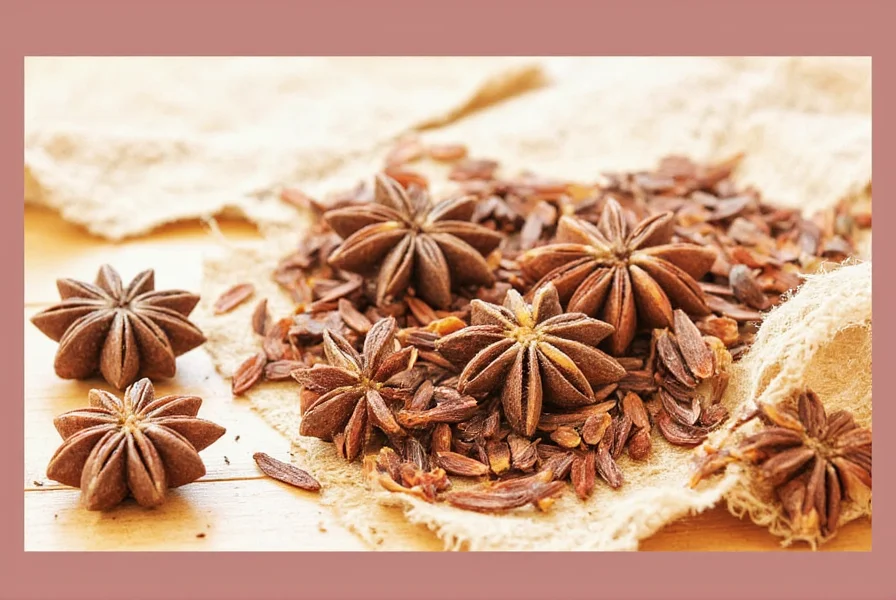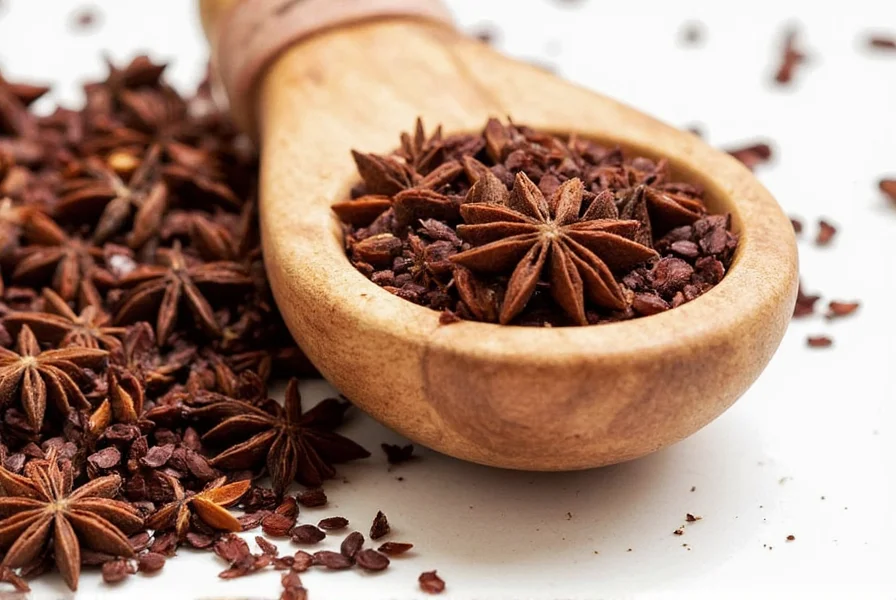When searching for information about the "star of anise," many people are actually looking for details about star anise—a common terminology mix-up. This comprehensive guide clarifies the confusion while providing authoritative information about this remarkable spice, its culinary applications, potential health benefits, and proper usage techniques.
Understanding Star Anise: Botanical Background
Star anise (Illicium verum) belongs to the Schisandraceae family and should not be confused with regular anise seed (Pimpinella anisum), which comes from a completely different plant family. The star-shaped fruit contains 6-8 carpels arranged in a radial pattern, each housing a single seed. This unique spice grows on medium-sized evergreen trees primarily cultivated in China, Vietnam, and other parts of Southeast Asia.
The harvesting process occurs when the fruit is still green and unripe, then sun-dried until it transforms to its characteristic reddish-brown color. This drying process concentrates the essential oils, particularly anethole, which gives star anise its distinctive licorice flavor and aroma.

Culinary Applications of Star Anise
Chefs and home cooks worldwide value star anise for its complex flavor profile that combines sweet, spicy, and slightly bitter notes. Unlike ground spices, whole star anise maintains its potency for extended periods, making it ideal for slow-cooked dishes where flavors develop gradually.
| Cuisine Type | Common Uses | Recommended Quantity |
|---|---|---|
| Chinese | Braising liquids, five-spice powder, pho broth | 1-2 whole stars per dish |
| Indian | Garam masala, biryani, chai tea | 1 star per 4 servings |
| Middle Eastern | Rice dishes, stews, meat marinades | 1 star per recipe |
| European | Liqueurs, baked goods, fruit compotes | 1 star per 2 cups liquid |
When cooking with star anise, remember that its flavor intensifies over time. For best results, add whole stars early in the cooking process for slow-simmered dishes, but use ground star anise later for quicker preparations. Always remove whole stars before serving, as the hard texture isn't meant for consumption.
Star Anise vs Anise Seed: Key Differences
Many people confuse star anise with regular anise seed, but these spices differ significantly:
- Botanical origin: Star anise comes from an evergreen tree (Illicium verum), while anise seed comes from an annual herb (Pimpinella anisum)
- Flavor intensity: Star anise contains approximately 90% anethole compared to 80-90% in anise seed, making it slightly more potent
- Shikimic acid content: Star anise contains significantly higher levels, making it valuable for pharmaceutical applications
- Physical characteristics: Star anise appears as a hard, woody star-shaped pod, while anise seed resembles small, oval seeds
When substituting one for the other, use approximately 1 whole star anise for every 1 teaspoon of anise seed, recognizing that the flavor profiles aren't identical.
Potential Health Benefits and Safety Considerations
Traditional Chinese medicine has utilized star anise for centuries to address digestive issues, respiratory conditions, and as a natural remedy for colic in infants. Modern research suggests several potential benefits:
- Digestive support: May help alleviate bloating, gas, and indigestion
- Antioxidant properties: Contains compounds that may combat oxidative stress
- Antimicrobial effects: Shows potential against certain bacteria and fungi
- Source of shikimic acid: Used in the production of some antiviral medications
However, proper identification is crucial, as Japanese star anise (Illicium anisatum) is toxic and should never be consumed. Always purchase star anise from reputable sources to avoid this dangerous confusion. People with estrogen-sensitive conditions should consult healthcare providers before consuming large amounts, as star anise contains compounds with potential estrogenic effects.

Selection, Storage, and Usage Tips
When selecting star anise, look for:
- Deep reddish-brown color (avoid pale or yellowish specimens)
- Intact, eight-pointed stars with all points present
- Strong, sweet aroma when crushed slightly
- Hefty weight indicating good oil content
For optimal storage, keep whole star anise in an airtight container away from light and heat. Properly stored, it maintains peak flavor for 1-2 years. Ground star anise loses potency more quickly and should be used within 6 months.
Creative culinary applications include:
- Infusing simple syrup for cocktails and desserts
- Adding to poaching liquid for fruits like pears and peaches
- Creating aromatic rice dishes by adding to cooking water
- Enhancing chocolate-based recipes with subtle licorice notes
- Flavoring homemade vanilla extract for added complexity
Common Misconceptions About Star Anise
Several misconceptions surround this spice:
- Misconception: "Star of anise" is the correct term - Reality: The proper term is "star anise" without the "of"
- Misconception: Star anise and anise seed are interchangeable - Reality: They come from different plants with distinct flavor profiles
- Misconception: All star-shaped spices are safe - Reality: Japanese star anise is toxic and must be avoided
- Misconception: Star anise loses all flavor when cooked - Reality: It actually releases more flavor during slow cooking
Frequently Asked Questions
Is star anise the same as anise seed?
No, star anise and anise seed come from completely different plants. Star anise (Illicium verum) is a star-shaped fruit from an evergreen tree, while anise seed (Pimpinella anisum) comes from an annual herb. Though both contain anethole and have similar licorice flavors, star anise is slightly more potent and has a woodier note.
Can I substitute star anise for anise seed in recipes?
Yes, but with adjustments. Use one whole star anise for every teaspoon of anise seed called for in a recipe. Remember that star anise has a stronger, more complex flavor, so you may want to start with less and adjust to taste. Whole star anise works best in slow-cooked dishes, while ground star anise can substitute more directly for anise seed powder.
What are the health benefits of star anise?
Star anise has been used traditionally for digestive support and respiratory issues. It contains antioxidants and shows potential antimicrobial properties. It's also a significant source of shikimic acid, used in some antiviral medications. However, most health claims require more scientific validation, and star anise should be consumed in culinary amounts as part of a balanced diet rather than as a treatment for medical conditions.
How can I tell if my star anise is safe to consume?
Ensure you've purchased Chinese star anise (Illicium verum) from a reputable source. Avoid Japanese star anise (Illicium anisatum), which is toxic. Chinese star anise has eight points (sometimes seven or nine), a sweet licorice aroma, and reddish-brown color. Japanese star anise has more points (10-12), a less pleasant odor, and is often sold by unreliable vendors. When in doubt, consult an expert or purchase from established spice merchants.
How should I store star anise to maintain freshness?
Store whole star anise in an airtight container away from light, heat, and moisture. Properly stored, it maintains peak flavor for 1-2 years. Ground star anise loses potency more quickly and should be used within 6 months. To test freshness, crush a small piece - it should release a strong, sweet licorice aroma. Avoid storing near strong-smelling foods as star anise readily absorbs other odors.











 浙公网安备
33010002000092号
浙公网安备
33010002000092号 浙B2-20120091-4
浙B2-20120091-4